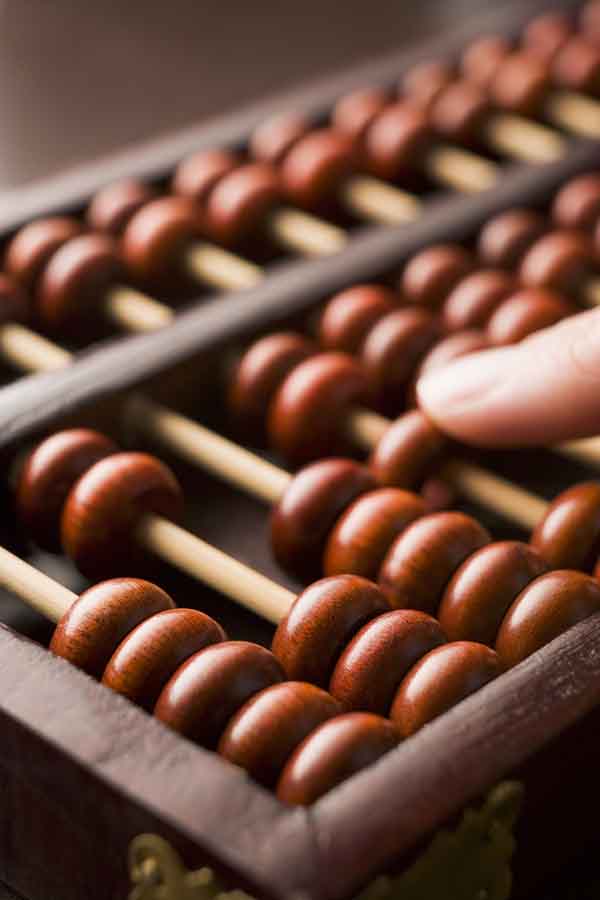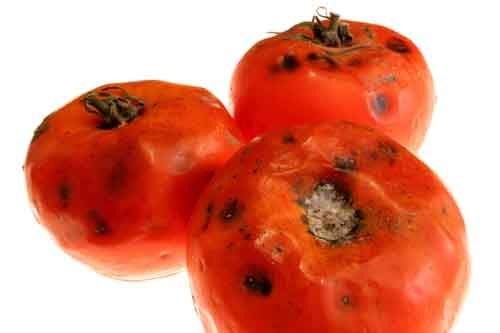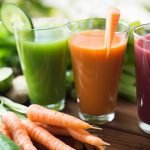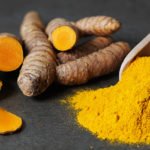On April 6th, the Journal of the National Cancer Institute published the results of a study on the relationship between the dietary intake of fruits and vegetables and the incidence of cancer. Analyzing data from the European Prospective Investigation into Cancer and Nutrition (EPIC), which recruited 142,605 men and 335,873 women in Denmark, France, Germany, Greece, Italy, the Netherlands, Norway, Spain, Sweden and the United Kingdom, between 1992 and 2000, the study concluded that fruits and vegetables provide only a modest protection, at best, against cancer. Specifically, the report concluded that if people increased their consumption of fruits and vegetables by 150 g a day (about 5 oz), it would result in a decrease of just 2.6% in the rate of cancers in men and 2.3% in women. Even more damning, the study concluded that those who eat virtually no fruits and vegetables are only 9% more likely to develop cancer than those who eat lots of fruits and vegetables.
This, of course, produced the typical flurry of “hyperbolated” headlines in the media and wire services.
- Eating more fruit and veg does not prevent cancer
- Fruits and vegetables provide only modest protection from cancer?
- Diet rich in fruits and vegetables has little effect on cancer risk–study
- Fruits and Veggies Do Not Reduce Cancer Risk
The media had fun with the headlines because the results of the new study run so dramatically counter to previous studies that have indicated that cancer can be prevented by a high intake of fruits and vegetables. The authors of the EPIC study explained this discrepancy by noting that the results of previous studies were actually inconsistent, and that this inconsistency was the result of the faulty methodologies used in previous studies. Not surprisingly, the mainstream media loved the controversial nature of the results and published them without questioning their validity. (Investigative journalism is a dying art. Nowadays, the media reprints, without question, any announcement coming from any so-called “reliable” source.)
Shame on them! As it turns out, the EPIC study has a hole so big in its methodology, you could drive a fleet of trucks through it.
Clinical studies, case control studies, and cohort studies
Before we begin to take on the EPIC study itself, we need to discuss the differences in the three types of studies predominantly used in the health and medical fields: Clinical Studies, Case Control Studies, and Cohort Studies.
Clinical Studies
 Clinical studies (or trials) are probably the type of study you’re most familiar with since they’re the standard for evaluating and approving new drugs and are frequently cited in advertisements promoting those drugs. They are often executed in phases as part of the drug development process in which the effects of a drug are tested in people. In clinical studies, patients voluntarily participate in trials in which they actually use the drugs being evaluated to verify the efficacy and safety of those drugs. In most such studies, some of the volunteers are unknowingly placed in a control group and receive a placebo to provide a baseline for evaluation of the “real” drug. Clinical studies actually consist of three phases:
Clinical studies (or trials) are probably the type of study you’re most familiar with since they’re the standard for evaluating and approving new drugs and are frequently cited in advertisements promoting those drugs. They are often executed in phases as part of the drug development process in which the effects of a drug are tested in people. In clinical studies, patients voluntarily participate in trials in which they actually use the drugs being evaluated to verify the efficacy and safety of those drugs. In most such studies, some of the volunteers are unknowingly placed in a control group and receive a placebo to provide a baseline for evaluation of the “real” drug. Clinical studies actually consist of three phases:
- Phase I: Testing in healthy volunteers, known as subjects. Although numbers involved in testing may be as few as five, they usually run between 20-100 test subjects and last a minimum of six weeks.
- Phase II: Testing in patients in order to demonstrate the efficacy of the drug and find the optimum dose. Larger than Phase I testing, the number of subjects involved in Phase II testing will usually reach upwards of 300.
- Phase III: Testing in a large number of patients (sometimes 3,000 or more) in order to test the safety and efficacy of a drug and detect any side effects.
It should be noted that clinical testing is stacked against alternative health remedies by virtue of the costs and requirements involved. Full scale testing, through all three phases, can often run $100 million to as much as $800 million per drug candidate. However, since drugs are patentable and can produce revenues of tens of billions of dollars over the life of a single drug, the cost of testing is not necessarily unbearable for the large pharmaceutical companies. In fact, as much as they complain about the costs, they actually like the costs involved in testing since it limits the completion. Only the big boys can afford this level of testing.
As for alternative health remedies, the costs are simply impossible. Natural remedies comprised of natural ingredients (unless they contain some absolutely unique combination never before seen or some major technical innovation) cannot be patented. That means if a company wished to prove that the combination of herbs in a blood cleansing formula such as Essiac Tea, or the Hoxsey Formula, or Baseline Nutritionals’ Blood Support Formula helped cure cancer, it would cost them well over $100 million, and if proved successful, they would be unable to patent the formula. That means that every other herbal company in the world could use those studies as the basis to produce and market an identical formula without having to bear the $100 million cost of performing the same studies. They could, therefore, effectively sell the formula at a huge discount and prevent the original company from ever recovering its testing costs — thus driving them into bankruptcy. Bottom line: without the ability to patent natural formulas, full scale clinical testing is a financial impossibility.
It should also be mentioned that clinical testing is hardly flawless — particularly since drug companies control all aspects of the tests they pay for. This includes being able to suppress any studies that contain negative results, with no requirement that those negative results ever be published. In other words, the law allows for clinical testers to cherry pick data. Is it any wonder that we regularly learn of drugs that passed clinical testing with flying colors, were approved by the FDA, and that down the road turned out to kill people by the thousands? Can you say Vioxx, Avandia, and Celebrex?
In any case, no clinical studies were involved in the European Prospective Investigation into Cancer and Nutrition, which brings us to Case Control Studies and Cohort Studies — neither of which involves test subjects.
Case Control Studies
 In Case Control Studies (also called Retrospective Studies), subjects are not tested. Rather, data is analyzed. Specifically, the risk factors of people with a certain disease (cases) are compared with those without the disease (control). In effect, researchers study the medical and lifestyle histories of the people in each group to learn what factors may be associated with the disease or condition being examined. For example, in studying cancer, one group identified in the data may have included lots of fruits in vegetables in their diets, whereas another group did not. In fact, virtually all previous studies trying to identify the relationship between diets high in fruits and vegetables and cancer were Case Control Studies.
In Case Control Studies (also called Retrospective Studies), subjects are not tested. Rather, data is analyzed. Specifically, the risk factors of people with a certain disease (cases) are compared with those without the disease (control). In effect, researchers study the medical and lifestyle histories of the people in each group to learn what factors may be associated with the disease or condition being examined. For example, in studying cancer, one group identified in the data may have included lots of fruits in vegetables in their diets, whereas another group did not. In fact, virtually all previous studies trying to identify the relationship between diets high in fruits and vegetables and cancer were Case Control Studies.
There is a problem with Case Control Studies.
According to the authors of the EPIC study, previous Case Control Studies “likely” produced false results indicating that a fruit and vegetable diet was significantly beneficial in preventing cancer because “they are inherently biased.” Since Case Control Studies, by definition, seek to identify the factors contributing to cancer by comparing people who have the disease with those who do not, but are otherwise similar, they can easily introduce bias if they do not adequately establish that the two groups being compared are, indeed, otherwise similar. According to the people involved in the EPIC study, this is exactly what happened in previous studies in that the earlier studies were more likely to “select” health-conscious people as their controls. This makes them inherently dissimilar from the case group in ways beyond just the intake of fruits and vegetables. And thus, according to the EPIC researchers invalidates their results.
For these reasons, the EPIC study chose to follow a Cohort model.
Cohort Studies
A Cohort Study is a research study in which a particular outcome, such as death from cancer, is compared in groups of people who are alike in most ways but differ by a certain characteristic, such as smoking — or in this case, those who eat lots of fruits and vegetables and those who don’t. Or to explain it another way, a cohort is any group of individuals who are linked in some way or who have experienced the same significant life event within a given period. There are many kinds of cohorts, including disease, death, location, ethnic background, sex, etc. Any study in which there are measures of some characteristic of one or more groups of similar individuals at two or more points in time is a cohort analysis. In general, Cohort Studies attempt to identify cohort effects. Are changes in the dependent variable (cancer) due to different rates of consumption of fruits and vegetables, for example? In other words, cohort studies are about the life histories of sections of populations and the individuals who comprise them…over time.
 At first glance, the difference between Case Control Studies and Cohort Studies might appear subtle, but in truth, it is significant.
At first glance, the difference between Case Control Studies and Cohort Studies might appear subtle, but in truth, it is significant.
In a Case Study, only after the data is assembled by outcome (death from cancer, e.g.), do the researchers then seek to identify those factors that might have contributed to a medical condition by comparing subjects. In a Cohort Study, groups are separated in advance (those who eat lots of fruit and vegetables and those who don’t, for example), and then their outcomes are tracked over time. If the difference in outcome is substantial, the differentiating factor is determined to be substantial. If the outcomes are similar, the factor is considered to be not substantial.
In general, among researchers, a Cohort Study is considered to be less prone to bias and more likely to identify causation. Control studies are simpler, cheaper and although more prone to bias are highly effective at “indicating” causation and pointing researchers in a direction worthy of further study.
That’s the theory, anyway.
In fact, Cohort Studies are highly subject to the vagaries of interpretation and can lead to some very bizarre “peer reviewed” conclusions based on the bias inserted during cohort selection. A great example can be found in the Cohort Studies on the effectiveness of the seasonal flu vaccine that indicate a 50-90% effectiveness rate for the vaccine and that are cited as gospel by doctors all over the world and by medical experts on television. However, even a casual examination of these studies reveals their absurdity. The Atlantic Monthly wrote a great article eviscerating these studies and summarized by Mike Adams in Natural News. The conclusion in both articles is that the flu vaccine Cohort Studies are rendered irrelevant by the bias of the cohort selection. Consider:
- Because it’s virtually impossible to identify who has the flu and who doesn’t, the researchers identified their cohort as those who died from all causes (flu, coronary events, lightning strikes, accidents, whatever) and then broke that into two: those who received the flu vaccine and those who didn’t. Choosing the cohort as deaths from all causes introduces a bias into the study. To be fair, the researchers figured that any difference in outcomes between those who had the flu vaccine and those who didn’t would by definition sort itself out and be the result of the flu vaccine alone since lightning strikes would obviously be the same in both groups. Unfortunately, what is obvious is not always true. In the end, you have to be absolutely blind to miss the anomalies once you look at the published results. What were these results? These studies show a “dramatic difference” between the death rates of those who get the vaccines VS those who don’t (50-90% less depending on the study cited). And therein lies the problem.
- According to the National Institute of Allergy and Infectious Diseases, deaths from influenza account for — at most — 10 percent of the total deaths during the flu season. Nevertheless, the Cohort Studies found that receiving a flu vaccine reduced total deaths by 50 percent — five times the total number of flu deaths. That’s one amazing vaccine!
- To put this in perspective, according to Dr. Tom Jefferson of the Cochrane Collaboration, “For a vaccine to reduce mortality by 50 percent, and up to 90 percent in some studies, means it has to prevent deaths not just from influenza, but also from falls, fires, heart disease, strokes, and car accidents. That’s not a vaccine, that’s a miracle.”
- And as icing on the cake, there was also no difference in mortality rates based on whether the deaths occurred in flu season or out of it. Truly, a miraculous vaccine!
So is there any valid conclusion that we can make from the flu vaccine Cohort Studies? Probably! Since people taking the vaccine had fewer heart attacks, deaths by accident, lightning strikes, etc. (but not necessarily from the flu itself), we can probably conclude that people who choose to get vaccinated are likely to be more health and safety conscious than those who don’t — and thus avoid dangerous situations and risks. But as far as the primary purpose of the studies, the efficacy of the flu vaccine, no conclusions can be made because of the bias introduced into the study by the flawed cohort selection of people who died from all causes.
The bottom line is that Cohort Studies are not necessarily less biased than Case Studies. And they are not necessarily likely to produce more “accurate” results. It all depends on what biases are introduced and how they affect the data and conclusions drawn. Which brings us to the issue at hand: what can we say about the conclusion of the EPIC study that eating a diet rich in fruits and vegetables has only marginal impact on your odds of getting cancer?
Driving a entire fleet of trucks through the study’s bias
As I mentioned earlier, the EPIC study has a hole so big in its methodology, you could drive a fleet of trucks through it.

The basis of the cohort selection is the consumption of ALL fruits and vegetables. Whoever suggested that ALL fruits and vegetables help prevent cancer?
Have you ever seen any reports from alternative healers suggesting that eating dates, corn, and/or iceberg lettuce will prevent cancer? I haven’t. Have you ever seen any research studies suggesting that ALL fruits and vegetables prevent cancer? Of course not! No, what you have seen is studies that indicate that ellagitannins, as found in raspberries and pomegranates can prevent cancer, or that sulforaphanes, as found in the cruciferous vegetables such as broccoli sprouts can prevent cancer. Running a study on all the cancer prevention capabilities of ALL fruits and vegetables makes as much sense as running a study on ALL college students to see if going to college makes for good doctors. If you factor in all of the students who major in art, economics, history, English lit, foreign languages, etc. and how their college experience affected their abilities as doctors (considering that none of them become doctors), you would be forced to conclude that going to college had little impact on becoming a doctor. It’s a simple matter of diluting the data pool.
Likewise, analyzing the benefits of ALL fruits and vegetables in terms of preventing cancer dilutes the data — totally obscuring the benefits that can be found in specific fruits and vegetables such as tomatoes, raspberries, pomegranates, and broccoli. And worse, the dilution would be made even more extreme because the dominant fruits and vegetables that people eat are of the non-cancer preventing variety. Far, far, far more people eat iceberg lettuce than broccoli. Or to put it another way, broccoli sprouts could be as much as 90% effective at preventing certain cancers, but once you dilute that data with the massive intake of iceberg lettuce, which has zero preventative value, it would only show up as 2.6% effective. As George Bush (the first) said, “I do not like broccoli. And I haven’t liked it since I was a little kid and my mother made me eat it. And I’m President of the United States, and I’m not going to eat any more broccoli.”
The bottom line is that lettuce, corn, carrots, and peas make up a whole lot more of the fruits and vegetables consumed than do broccoli and pomegranates. Potatoes are, of course, the most popular vegetable, but the study wisely excluded them from its calculations.
In addition, the study itself alludes to two other significant problems.
- “We did not take into account the differences in crop production and food preparation.”
These are hardly insignificant issues and can significantly impact results. A great example is selenium, a trace mineral known to lessen the risk of cancer. The problem is that plants can grow quite well without selenium in the soil, which is the case with all intensively farmed soil unless it is regularly re-mineralized, something that is only done on a handful of high-end organic farms. The problem is that fruits and vegetables high in selenium do indeed have cancer fighting properties; those without lose out on that benefit. Thus the issue of “crop production” is not just of passing interest in any study of the cancer fighting properties of fruits and vegetables. It is of primary importance. Likewise, food preparation matters. Except for lycopene, which is enhanced by cooking, most vitamins and antioxidants are destroyed by high heat.
Once again, the EPIC study has a hole so big in its methodology, you could drive a fleet of trucks through it. The question of the moment, then, is how could this happen?
Arrogance
 To me, the answer is simple: arrogance. Quite simply, any study on diet and cancer that does not include as part of its research team an expert in the use of diet in preventing cancer is fatally flawed. And by such an expert, I’m not talking about a dietician or nutritionist who comes from the schools and universities controlled by medical doctors. They merely echo the opinions of the doctors they serve. Remember, these are the same people who create the menus severed in hospitals (processed meat, instant mashed potatoes, peas, and processed apple juice that is little more than flavored sugar water) and think these foods actually help people get well. No, I’m talking about alternative health nutritionists who actually live their teachings and who actually use diet to cure disease.
To me, the answer is simple: arrogance. Quite simply, any study on diet and cancer that does not include as part of its research team an expert in the use of diet in preventing cancer is fatally flawed. And by such an expert, I’m not talking about a dietician or nutritionist who comes from the schools and universities controlled by medical doctors. They merely echo the opinions of the doctors they serve. Remember, these are the same people who create the menus severed in hospitals (processed meat, instant mashed potatoes, peas, and processed apple juice that is little more than flavored sugar water) and think these foods actually help people get well. No, I’m talking about alternative health nutritionists who actually live their teachings and who actually use diet to cure disease.
I’m reminded of an incident when I was speaking at an event in Houston, TX some ten years ago. During my talk on the Baseline of Health, a medical doctor in the audience started heckling me. He burst in with a question in the middle of the talk — well before the allotted Q&A session. I politely answered his question and tired to continue, but he burst in again. “Well okay, that answers my first question, but what about…”
Again I answered his second question, and he burst in again, “Well okay, that answers that question, but what about…”
He actually did this three times before the audience shouted him down and forced him to hold his questions until the end of the talk. Later, when I was sitting alone, reading in the hotel lobby, he walked up to me to say hello and apologize for interrupting. He then sat himself down in front of me and announced, “To tell the truth, I actually didn’t have much of a background in alternative health until last weekend, when I became an expert. The head of my hospital was supposed to come to your lecture, but couldn’t make it at the last minute; so he told me I should go in his place. So I picked up a couple of books on alternative health and skimmed over them last weekend. That’s how I picked up my expertise in the field.”
I found this pretty amazing because after more than 30 years in the field (that was ten years ago), I could claim only a general working knowledge of alternative health as a whole, and a mild expertise in only one or two areas. To claim expertise over the entire field in two days of study indicated either an intelligence beyond comprehension or an arrogance beyond belief. I was fairy convinced, after just a few minutes exposure to him, that intelligence beyond comprehension was not an option.
In truth, I see this same arrogance exhibited throughout the medical community. Doctors acknowledge the years of study it takes to become a medical doctor, but think it only takes a weekend to learn anything of use in alternative health — actually a far bigger field than modern medicine. Herbology alone is a field of vast proportions, with most people specializing in just one area — Chinese herbs, Ayurvedic medicine, rainforest herbs, or the European/American Indian blended tradition. Only arrogance could account for the fact that the researchers felt they had the nuances of using diet to prevent cancer under control without bringing in a functioning expert in the field.
It’s probably worth noting that arrogance is not free. Any qualified naturopath who was familiar with diet as a cancer preventative could have guided them around the flaw in their cohort selection. This would have saved them from wasting years of time spent on gathering useless data, not to mention millions of dollars in wasted research funds.
Additive VS subtractive
 There is one other deficiency in the study worth mentioning. Let’s pretend for a moment that despite all its other deficiencies, the conclusions arrived at are accurate — that fruit and vegetables only account for a small improvement in outcomes. Keep in mind, I have not said in this newsletter that the conclusions are wrong — only that the holes in the study are so profound, that any conclusions drawn from it are unsupportable. Future studies may prove them true — just not this one.
There is one other deficiency in the study worth mentioning. Let’s pretend for a moment that despite all its other deficiencies, the conclusions arrived at are accurate — that fruit and vegetables only account for a small improvement in outcomes. Keep in mind, I have not said in this newsletter that the conclusions are wrong — only that the holes in the study are so profound, that any conclusions drawn from it are unsupportable. Future studies may prove them true — just not this one.
So, let’s say for a moment that eating more fruits and vegetables only improves your cancer outcome by 2.6%. Is that a bad thing?
Modern medicine is subtractive in nature. (I’ve covered this in detail in Lessons from the Miracle Doctors, but will summarize here.) Chemotherapy, for example, is an all-or-nothing proposition in application. If you use chemotherapy, you wipe out your immune system, which pretty much ends the possibility of using your immune system to overcome the cancer. That means chemotherapy and, likewise, most medical treatments have to work consistently in a high enough percentage of cases or they are dismissed as invalid. And in fact, virtually all medical treatments are tested under this paradigm — subtracting everything down to one single variable. That makes sense when testing subtractive therapies like drugs, but it makes no sense for testing alternative therapies, which are additive. If a plant looks beneficial, isolate it down to its single most potent bioactive component by subtracting everything else out of the mix. This is the essence of the pharmaceutical industry. But it is absolutely contrary to nature.
Plants often contain multiple bioactives, and although some are stronger than others, oftentimes the whole is stronger than the sum of its parts. Even more fundamental is that some components test as having zero bioactivity on their own, but have the effect of making the bioactives many times stronger than if used in isolation — sometimes several thousand times stronger. Thus, a biochemical that would be subtracted out of the final product because it has no bioactivity in isolation testing would make the final product far, far more potent if it were present.
The simple truth is that alternative therapies are almost never administered in isolation (at least by practioners who understand what they’re doing). They are almost always administered as part of protocols. On occasion, you may get good results using just one component or another, but overall you get the best results when you run the program as a whole. Testing alternative therapies as though they were subtractive drugs dooms many of them to false failure. An alternative treatment that would be dismissed as ineffective because testing showed it to be only 10 percent effective in isolation (think fruits and vegetables in the EPIC study) might nevertheless be an invaluable part of a comprehensive program that contained seven of these 10 percent–effective components — giving you a 70 percent chance of overcoming your cancer if used in combination. Or a component (just like a single biochemical) might have no effectiveness by itself but serve to amplify the effectiveness of another component. Remove the first component and the second component comes up short in testing too. Nevertheless, the medical establishment deliberately chooses not to test alternative therapies as complete protocols, thus condemning all the individual components of a program with the “quackery” label. So, the only way you hear about effective alternatives is by word of mouth or anecdotal evidence.
This relates to the EPIC study, because, as I’ve already mentioned, diet is usually only one component of an alternative health program. Other components would include, among other possibilities, supplementation, detoxing, and energy work.
Conclusion
Along with the fact that the study’s conclusions on the value of fruits and vegetables in preventing cancer are fatally flawed, there is still solid evidence that fruits and vegetables protect against heart disease and strokes by reducing blood pressure. In fact, a separate investigation of the data used in the EPIC study suggests that those who eat five servings a day of fruit and vegetables have a 30% lower incidence of heart disease and strokes than those who eat less than one and a half servings.
It should also be noted that the study specifically excluded fruit and vegetable juices. And that might seem reasonable at first glance, since the researchers were concerned about added sugar and dilution from water added to concentrates. But again, that merely displays their ignorance of a true alternative health approach to diet and cancer. Unfortunately, a blanket exclusion of juices left out one of the most powerful healing tools available to the human body — live, fresh juices made in your home minutes before you drink them. Live, fresh juices are an entirely different species than Sunny Delight or Campbell’s tomato juice. In fact, as I’ve frequently said, a good juicer is probably the single best investment you can make in your health. The bottom line is that far from being excluded from a cancer prevention program, juice fasting is an essential component of any natural cancer treatment program.
In conclusion, there is nothing of value in the conclusions of the EPIC study on diet and cancer, and you still have every reason in the world to eat a Mediterranean type diet that includes an abundance of fresh fruits and vegetables — not only for heart health, but for cancer prevention as well.












